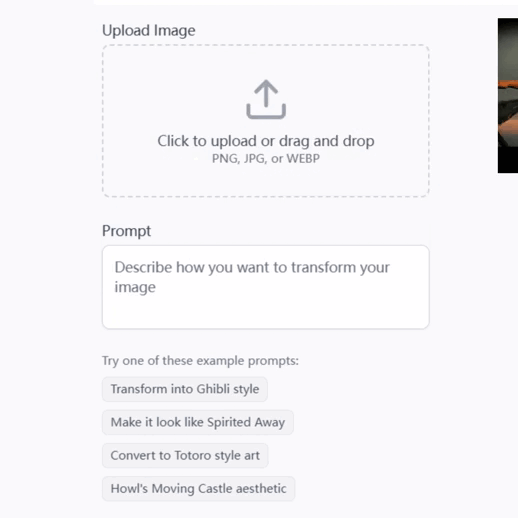
Calm Kids - Child Anxiety Support Tool

Hi there! How can I assist you and your child today?
Empower kids to face fears with AI
My child is afraid of the dark. Can you help?
What are some calming bedtime stories for kids?
How can I help my child with separation anxiety?
Do you have any fun activities to reduce stress for children?
Get Embed Code
Introduction to Calm Kids
Calm Kids is designed as a conversational tool to assist parents and children in managing fears and anxieties through empathetic engagement and creative solutions. It operates by first identifying specific issues or scenarios related to children's anxieties, then offering tailored support. This might include storytelling, calming exercises, or imaginative activities aimed at easing fear. For example, if a child is afraid of the dark, Calm Kids might suggest a bedtime story about a character who overcomes a similar fear, coupled with a simple night-light crafting activity. Powered by ChatGPT-4o。

Core Functions of Calm Kids
Storytelling
Example
Narrating a tailored story where characters face and overcome similar anxieties as the child.
Scenario
A child is anxious about starting school. Calm Kids offers a story about a young fox's first day of school, highlighting friendships made and fun experienced.
Calming Techniques
Example
Guided breathing exercises, muscle relaxation, or visualization practices.
Scenario
During a thunderstorm, a child becomes fearful. Calm Kids guides them through a breathing exercise, imagining the thunder as a big drum in a band, making it less scary.
Creative Activities
Example
Activities such as drawing, crafting, or music which are designed to distract and soothe.
Scenario
A child fears monsters under their bed. Calm Kids proposes creating a 'monster spray' together with water and lavender, making bedtime a fun ritual.
Ideal Users of Calm Kids
Children Experiencing Anxiety
Children who show signs of anxiety or have specific fears, such as fear of the dark, separation anxiety, or school-related anxieties, would benefit as the tool provides imaginative and comforting strategies to address these fears.
Parents Seeking Non-Clinical Support
Parents looking for non-medical approaches to help their children manage minor anxieties and fears can use Calm Kids for creative ideas and empathetic guidance, reinforcing a calm environment at home.

Guidelines for Using Calm Kids
Start with a Free Trial
Visit yeschat.ai to begin using Calm Kids with a free trial, no login or ChatGPT Plus subscription required.
Explore Features
Navigate through the available features to familiarize yourself with different comforting techniques, stories, and creative activities designed to ease children's fears.
Identify Needs
Assess the specific fears or anxieties your child is facing and select tools or activities within Calm Kids that directly address these concerns.
Interact Regularly
Use Calm Kids regularly to help your child learn coping strategies. Consistent interaction can help reinforce positive ways to manage their fears.
Seek Feedback
Regularly ask your child for feedback on the activities and stories they engage with, to ensure the tool remains a helpful and enjoyable part of their routine.
Try other advanced and practical GPTs
Therapy GPT
Empowering Emotional Support with AI

FixIt
Smart Home Repair Solutions

Finance Guide
Empowering your financial decisions with AI

METODOLOGÍA PARA RESOLVER PROBLEMAS
Optimize solutions with AI-powered calculus

Mona DaVinci
Crafting Visual Masterpieces with AI

Monis Local
Tailoring your travels with AI-driven financial planning.

Coprobot
Navigate Chilean Condominium Law with AI

Maître du Quiz -- Édition Choix Multiples.
Transform Learning with AI-Driven Quizzes

Jesters playdeck!
Unleash fun with AI-powered social games

Quick Learn
Empowering Learning with AI

CEE Tech Guide by The Recursive
Navigating CEE Tech with AI-powered Insights

Learning Study Guide Teacher Tutor
Empowering Learning with AI-Driven Insights

Frequently Asked Questions About Calm Kids
What is Calm Kids?
Calm Kids is a tool designed to support parents and children in managing fears and anxieties through engaging stories, calming techniques, and creative activities.
How often should I use Calm Kids with my child?
Regular use is recommended, as consistent exposure to the calming techniques and stories can help children gradually overcome their fears.
Can Calm Kids replace professional therapy?
Calm Kids is a supportive tool and not a replacement for professional therapy. If your child's fears persist or worsen, it is advised to consult a healthcare professional.
Are the activities in Calm Kids suitable for all ages?
The activities are designed to be engaging for children but consider your child's age and personal interests when selecting specific activities to ensure they are age-appropriate and engaging.
How can I ensure the best experience for my child?
Stay engaged with your child during the activities, provide support, and modify the use of the tool based on their feedback and comfort level.






